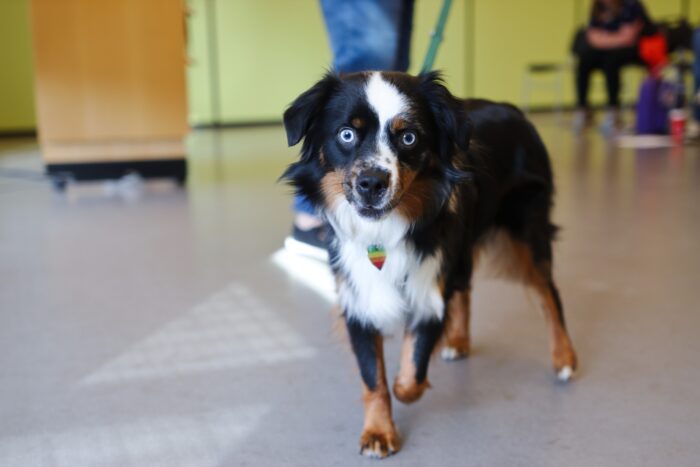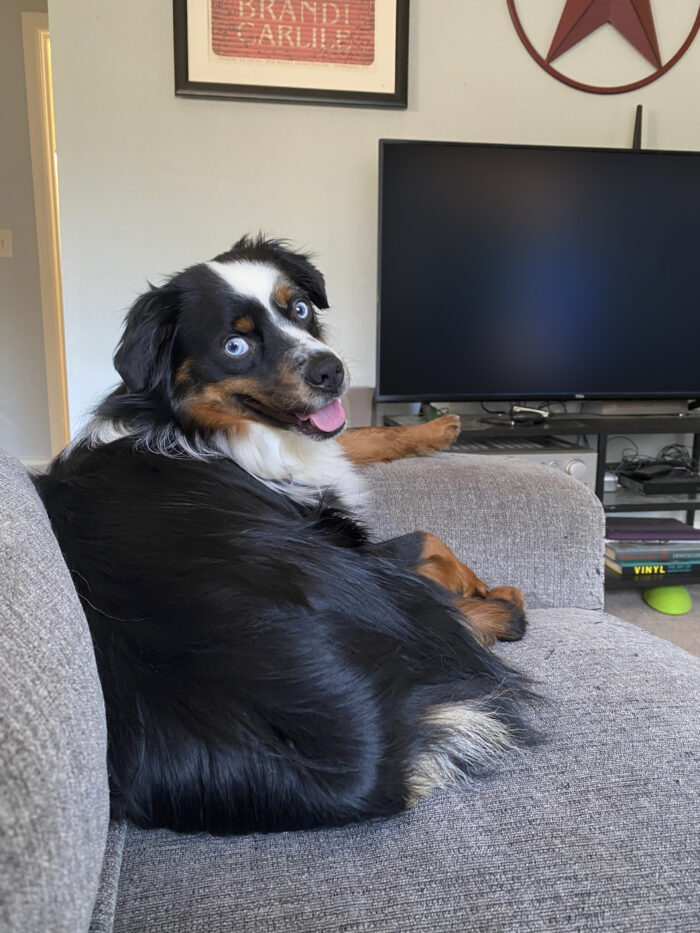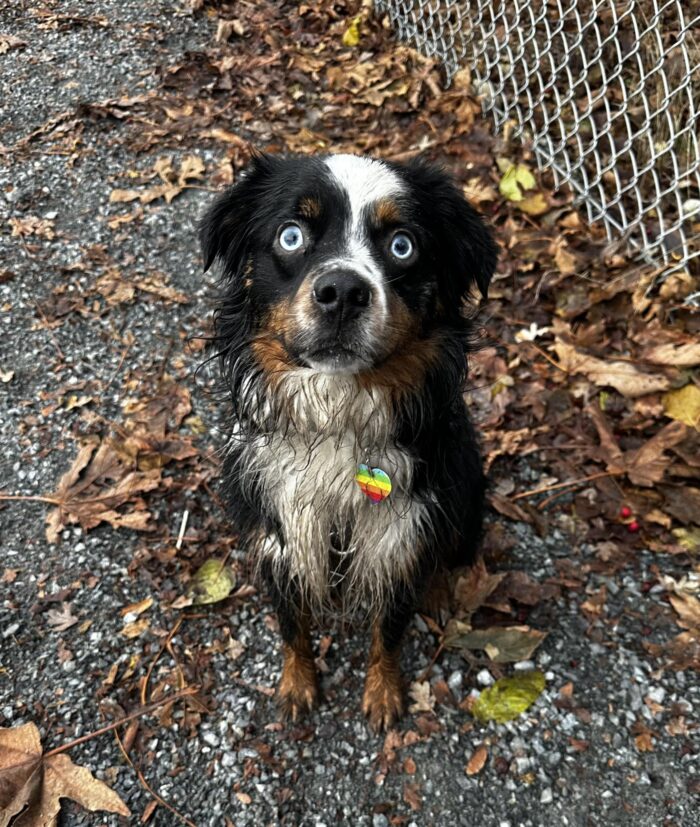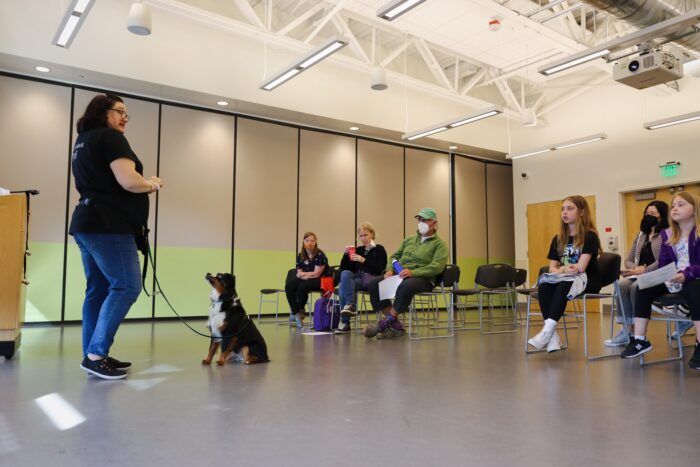Contributed by Farrah Branson, Animal Training Manager
When people think about dog training, they commonly think of teaching their dog new “obedience” skills. Often, they think of a well-trained dog as one that knows how to sit when asked, comes when called and walks nicely next to them on a leash. While these are useful skills to teach your dog, there is one lesson that I believe does not get nearly enough fanfare: teaching your dog to be calm.
Just imagine how impressed your guests will be when your dog calmly greets them upon arrival in your home instead of barking, jumping and acting like an attention-deprived fool! Trust me, I know your dog is well-loved and has your undivided attention. If this is your dog, I completely understand and empathize with you because my dog, Reggie, exhibited the same behaviors when I first welcomed him home.

Reggie, a Miniature American Shepherd, was 11 months old when I adopted him through Home To Home. In case you didn’t know, at 11 months old a dog is often in the throes of teenage-dom, very similar to humane teenagers. So many hormonal and life changes occurring at one time is enough to throw off the most well-tempered dog. Luckily for Reggie, I remember being 16 and know that it’s a difficult time that demands understanding and loving support.
As soon as Reggie arrived it was clear that calm was a foreign concept to him. Rather, excitement and enthusiasm were the names of his game. Even when I left the house to retrieve the mail, he was nearly frothing with excitement when I returned. I started a calm training protocol with him right away, and you can do it with your dog, too. Here are some tips to get started:
Entering the Home
If your dog is the highly excitable sort, like Reggie, you’d want to start this every time you enter the house. To not play into their enthusiasm, go about your business, ignoring the dog until they have stopped barking, jumping or exhibit any other over-excited behavior.
As soon as your dog exhibits calm behavior, give them attention and praise. Be sure to keep your energy calm and relaxed as you praise your dog. By only giving our attention and affection once your dog has calmed down, we send a nice clear message: I like it when you are calm!
Start implementing this with short sessions and increase as you have time and your dog makes progress understanding the new life skill. Patience is key! If you and your family practice this over time, you will see progress.

Reinforce
Start rewarding your dog whenever you notice their nice calm behavior. When your dog is quietly laying on the couch, grab a delicious treat (this is called a reinforcer) and offer it to them.
Over time, your dog will start to wonder “what was I doing at the moment I received this treat, and how can I repeat it to get more treats?” Calm is the answer buddy, just be nice and calm.
Practice Outside the Home
Once your dog has this one figured out inside the house, you can start using it outside the house. Try it in the car, on walks and before greeting people—watch for those moments of calm (however brief) and reinforce them! I hope this simple training makes life more pleasant for both you and your dog.

Be Patient and Consistent
This is a marathon, not a sprint. Learning new skills takes time. If you are patient and consistent with supporting your dog as they learn this invaluable life skill, you will make progress. Because you have practiced and reinforced this behavior so often, over time, your dog will naturally choose calm over chaos.

Need dog training support?
We’re here to help! Check out Seattle Humane’s dog training classes offered at our Bellevue campus.

Wow, that is a great advice! I’m going to use that with my next dog.
What beautiful soul-piercing blue eyes. I can tell Reggie likes making you happy by being calm!